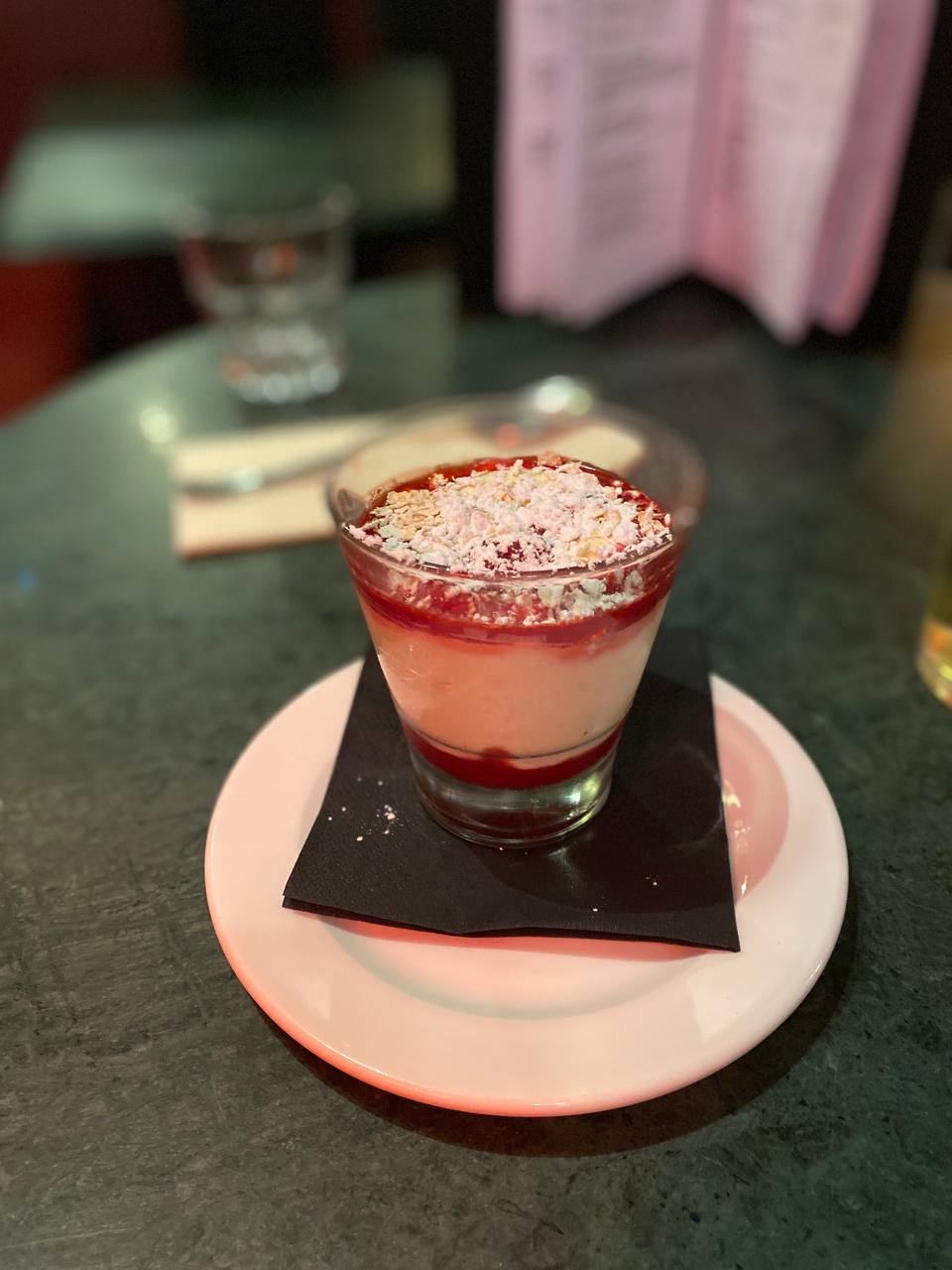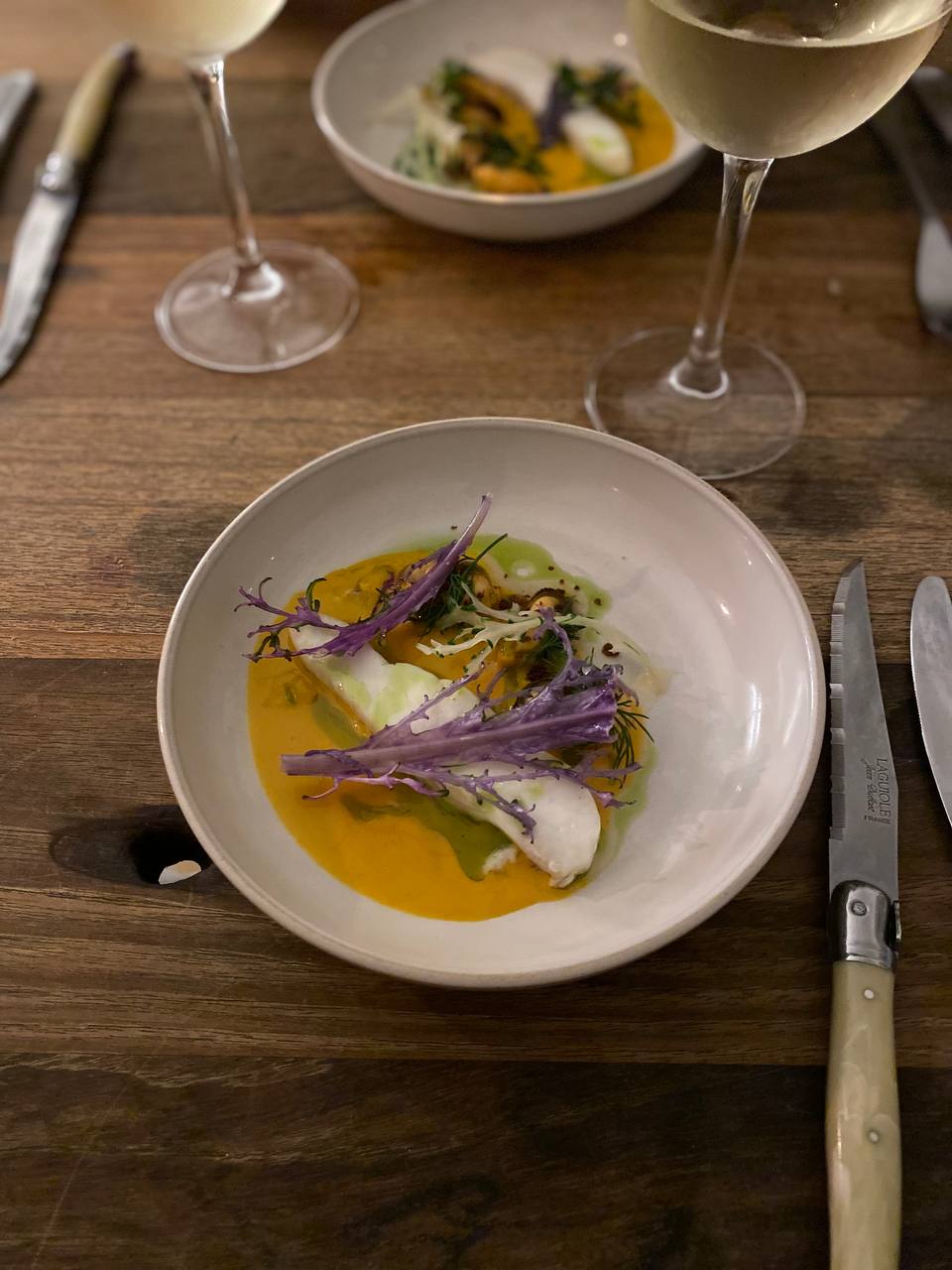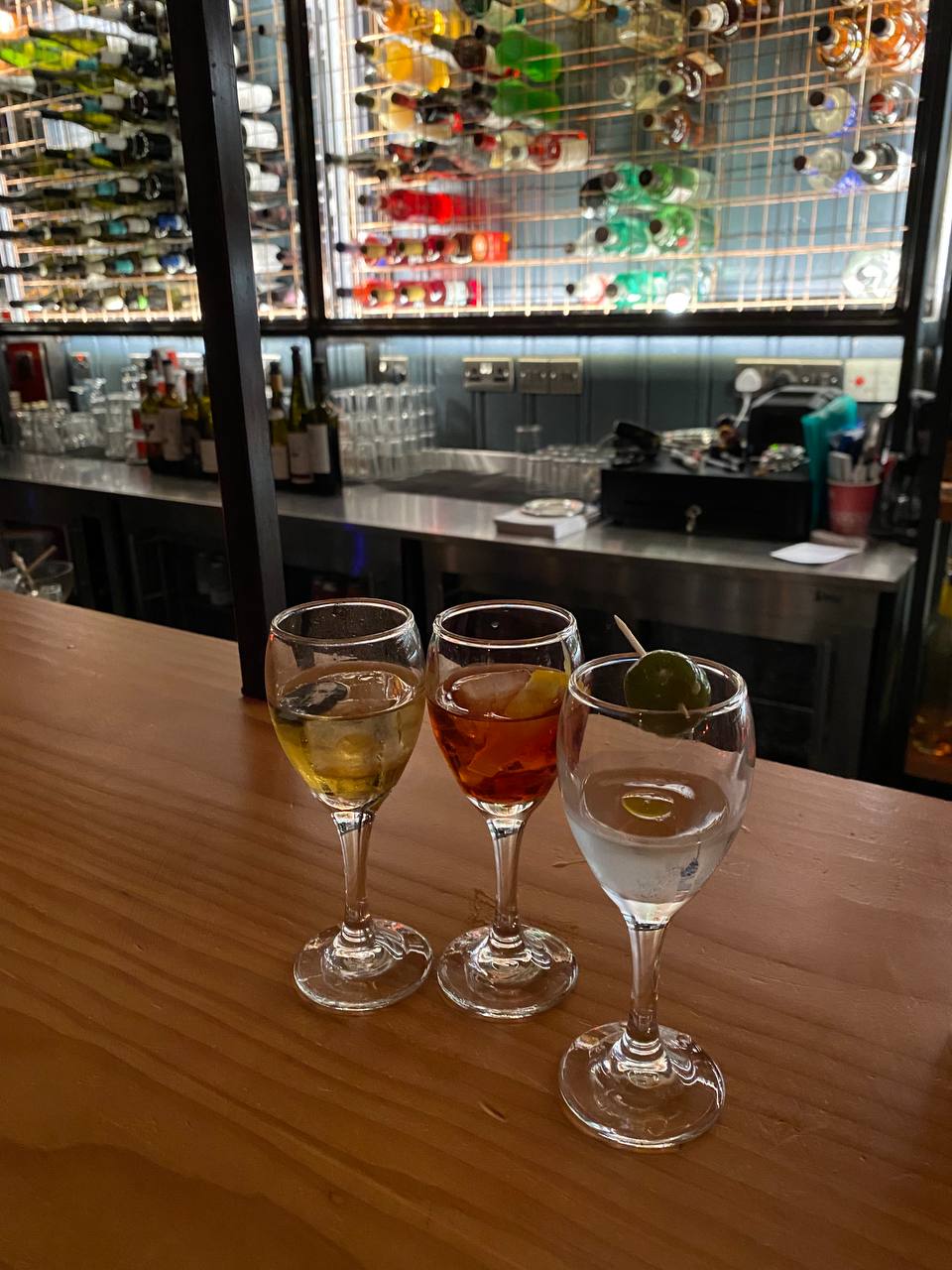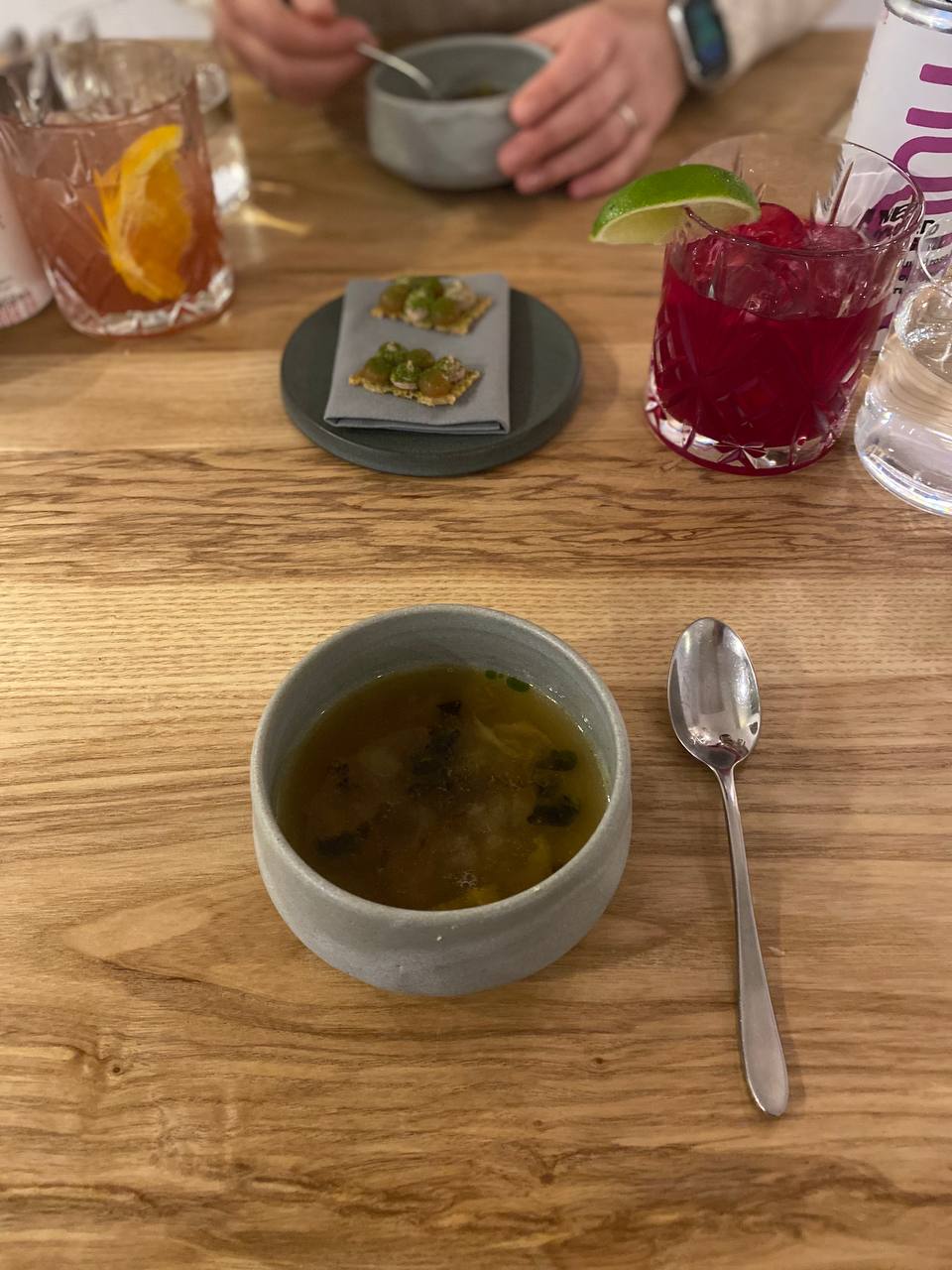Tuesday Triage #74
- TUESDAY TRIAGE #74 by Vadim Drobinin
- On visiting the North
- Things I enjoyed reading
- 1. How Millennials Killed Mayonnaise by @sandyhingston
- 2. The ancient potato of the future by @jamesnesw
- 3. Why Facts Don’t Change Our Minds by @jamesclear
- 4. Optimizing Your Wife by mathpages
- 5. Creating a Better Leaf by @ElizKolbert
- 6. The Invention of Chinese by Gina Anne Tam
- 7. Stephen Sondheim Didn’t Just Change Musicals. He Changed Crosswords by Ben Zimmer
- 8. Freeze en Place: How to Use Your Freezer as a "Cooking" Tool by Lucas Sin
- 9. ‘Even the reindeer were unhappy’: life inside Britain’s worst winter wonderlands by Ammar Kalia
- 10. More than you want to know about gift cards by @patio11
- Things I didn't know last Tuesday
- 1. Scott Monument
- 2. S'more origins
- 3. Mushroom Leather
- 4. Czech Cubist architecture
- 5. Reduced sunlight may contribute to winter weight gain
- 6. Dandy horse
- 7. Owners of flats near Tate Modern take privacy case to supreme court
- 8. Pease pudding
- 9. How silver objects tarnish
- 10. In Denmark it is common to leave babies outside while eating
- Book of the week
- Thank you and see you in a week!
TUESDAY TRIAGE #74
by Vadim Drobinin ¶
Your weekly crème de la crème of the Internet is here!
14.12.2021 (read in browser)
-
Intro
Whatever is on my mind this week. -
Things I enjoyed reading
Ten-ish articles I found worth reading. -
Things I didn't know last Tuesday
Ten-ish facts I didn't know when I wrote the previous edition. -
Book of the week
Some thoughts on the latest book I've read.
On visiting the North ¶
As you could tell by the themes behind this and last week's newsletters, I spent some time in the North of the islands, traveling between York, Newcastle and Edinburgh.
Locals tend to joke that "it's grim up North", but since my last trip the area definitely changed for the better, and could easily compete with London for its cocktails- and food-capital fame.
A few highlights in no particular order.
Newcastle is a lovely city, and I've visited it during my first visit to the UK in 2015, but never had neither the time nor the resources to explore local food. This is the only "planned" place we've visited, and it was really nice. Eggs baked in cream is something I have never tried before:

In Edinburgh I finally tried cranachan which I didn't know about a few weeks ago. The flavour is really nice, but I was quite disappointed by its lack of whiskey notes.

Another northern dish: eggs Benedict with haggis. As I learnt, I can eat haggis a few times a day in multiple shapes, and now slowly working towards making some from scratch at home.

When it comes to tasting menus, I gradually came to realising that I am almost never impressed by main courses: amuse bouche, petit four, starters, and desserts are the most unusual and interesting for me. It happened during this trip too, even though mains were really tasty too.
This is Jerusalem Artichoke, Chocolate & Malt and while it tastes like a better version of tiramisu ice cream, I was mostly surprised by the texture and ingredients used.

Another dish from another place is the first time I see sea buckthorn in a local menu. I grew up eating them from a tree pretty much annually, but apparently in Scotland people forage for them on the seaside and use in savory sauces. It paired really well with halibut.

Definitely not a local invention but something I would love to see more often is this cocktail flight in a bar: three classic cocktails (Negroni, Martini, and Godfather) but small. The bar is centred around various amari, and we were served by one of the owners (the bar is named after them).

To support my line about starters being among the most exciting parts of any tasting set, here is another one, a winter vegetables broth which was exceptionally meaty despite being totally meat-free. Must be one of the most tasty broths I ever had.

And last but not least, over the weekend I got a chance to make a birthday cake. It was meant to be diamond-shaped but as I woke up in the morning to check how the mousse layers are doing in the freezer I noticed that the freezer in fact wasn't working, so I had to improvise and build something way more grotesque.
While I don't have photos of the final creation or its layers (guests rushed over to destroy pretty much everything), I have a sneak peak into my sampling demo (aimed at polishing flavours and ratios). From bottom to top: feuilletine, hazelnut brownie, passion fruit ganache, and passion fruit mousse.

Next time I probably should just bake it. Would take less efforts and get way more reliable (won't be so tasty too).
Things I enjoyed reading ¶
1. How Millennials Killed Mayonnaise by @sandyhingston ¶
If I were to pick a single condiment to enjoy for the rest of my life, it'd be mayonnaise, partly for the magic of its creation, as if you've ever managed to make it successfully you would never forget the transition from a broken emulsion into a thick liquid, but also for the versatility of its flavours.
But here’s the thing: The all-American condiment didn’t have to be mayonnaise. It could have been ketchup or mustard. Hell, it could have been horseradish, but it wasn’t. It’s not mayo’s fault that it’s been so successful — that it glimpsed a condiment breach and jiggled right on through. As Boston chef Scott Jones told Ari LeVaux, “The magic that sets mayonnaise above Coke and Heinz is that mayo is a perfect flavor carrier.” It just makes everything better. Need proof? Do other condiments have pale imitators like Miracle Whip and Just Mayo and Vegenaise? I don’t think so!
Seems like soon it will be as uncommon as garum, until some folks dug up an old recipe book.
2. The ancient potato of the future by @jamesnesw ¶
Think a mix of archeology and memoirs, but about food? That's what this article is about: digging up the history through the way crops spread around.
Earlier, Wilson had told me the Diné name for the potato: nimási yazhi. “Nimási,” she explained, means potato. “Yazhi” is harder to translate, but in relation to a person, it means something like “little one,” a term of endearment. It’s the word her mother sometimes uses to refer to Wilson, or what Wilson calls her young nephew. “In our prayers, even in our songs, they say to Mother Earth, ‘I am your child. I am your little one.’”
I wonder if in the next years we will see more attempts to bring back the missing pieces of the puzzle, as very similar projects are kicking off all over the world.
3. Why Facts Don’t Change Our Minds by @jamesclear ¶
Despite quoting an article that in turn quotes my least favourite author, I do agree with the idea: it's nearly impossible to use facts as a proof to anyone who has already made up their mind.
In conversation, people have to carefully consider their status and appearance. They want to save face and avoid looking stupid. When confronted with an uncomfortable set of facts, the tendency is often to double down on their current position rather than publicly admit to being wrong.
Even outside of any public confrontation people tend to form their beliefs and thoughts on the course of decades, and as a result almost never take a different perspective lightly.
That's also why human interactions are so hard: if you present someone with different facts (or thoughts, or a point of view) they'd never assume your genuine desire to understand each other and will try to defend themselves, even though that's never the point.
4. Optimizing Your Wife by mathpages ¶
A mathematical perspective on the way to select the very best candidate, which is pretty much the opposite to how the real world operates (unless, probably, you take into account social networks).
Thus the optimum strategy for N = 100 is to pass on the first 9 candidates and then select the next “best so far”. This gives an expected value of about 91.4, and the probability of selecting the very best candidate (“100”) with this strategy is 0.221. In contrast, if we used the strategy designed to optimize the probability of selecting the very best candidate, without regard to the value of any of the other candidates, we would pass on the first 100/e = 33 candidates. This gives a probability of 0.371 of selecting the very best candidate, but the expected value with this strategy is just 81.4.
Also the approach assumes that it'd be possible to continue looking after you found the best candidate, and then return back once the search is finished, which is even a more rare case in the real world.
5. Creating a Better Leaf by @ElizKolbert ¶
To some extent building up on the last week's TIL about anthocyanins, a curious read about selective process behind agricultural decisions.
It is often said that the world now needs a New Green Revolution, or a Second Green Revolution, or Green Revolution 2.0. The rate of yield growth for crops like wheat, rice, and corn appears to be plateauing, and the number of people who are hungry is once again on the rise. The world’s population, meanwhile, continues to increase; now almost eight billion, it’s projected to reach nearly ten billion by 2050. Income gains in countries like China are increasing the consumption of meat, which requires ever more grain and forage to produce. To meet the expected demand, global agricultural output will have to rise by almost seventy per cent during the next thirty years.
The most interesting albeit obvious idea to me is that increasing consumption of meat in fact increases consumption of grain anyway, as livestock needs it too. The question of sustainability is who consumes more veggies, a vegan or a cow, given the latter could feed some people.
6. The Invention of Chinese by Gina Anne Tam ¶
I'd probably throw this into the next section, but there are too many facts to pick from, as the post changes the way I looked at Chinease language. Apparently everything I thought of as a dialect isn't really a dialect, so the actual Chinease I used to refer to is to some extent artificial in its superiority.
The Chinese government officially recognises these languages, from the widely spoken to the smaller variants, as fangyan – a word that dates at least to the second century BC, most frequently translated as ‘dialect’. But such a translation is inherently problematic. Dialects are subordinate – a dialect only makes sense if it is a dialect of something – and are mutually intelligible with the language they are a dialect of and with one another. These criteria do not apply to all, or even most, Chinese fangyan. Cantonese is not mutually intelligible with Shanghainese, nor is Qingdao-ese mutually intelligible with Hakka. And though the Chinese government calls Mandarin a ‘language’, a title not afforded to other fangyan, fangyan are not derived from Mandarin.
At the same time, learning Mandarin is probably a better investment of your time for a foreigner if you want to pick a single language out of dozens most common ones.
7. Stephen Sondheim Didn’t Just Change Musicals. He Changed Crosswords by Ben Zimmer ¶
The author of West Side Story and Sweeney Todd musicals also contributed a lot to cryptics crosswords. As far as I know, they're relatively common here in the UK, but not as much in the rest of the world:
Sondheim’s mischievous voice came through in his cryptic clues. One of his New York crosswords includes the punny clue “Zecret zyztem you might catch with zniffles?” The answer is CODE, which sounds like how you would say “cold” if you had a cold. A more complex Sondheimian clue is “Broken harmonicas found floating in Manhattan.” The word “broken” indicates you need to anagram the letters of “harmonicas.” The answer, MARASCHINO, is something you might find floating in a Manhattan — the cocktail, that is.
I've never seen them before though, and must say that it sounds way more interesting that the classic ones you could look up in mere seconds (I know that's never the point, but the possibility annoys me anyway).
8. Freeze en Place: How to Use Your Freezer as a "Cooking" Tool by Lucas Sin ¶
Here is an unusual technique to lift up your cooking routine:
My favorite application of this idea is also one of the simplest. During the winter, in many East Asian cities, including Hong Kong, where I grew up, you’ll find roasted sweet potato vendors parked on street corners. On one end of a small cart is a massive wok filled with pebbles, heated with coal. The vendor continually tosses the pebbles in the wok along with sweet potatoes to produce beautifully caramelized wok-roasted sweet potatoes with bright, fluffy flesh and a thin, papery, toasted skin. In cities with colder climates, the vendors are able to consistently achieve this cloud-like texture by first freezing the whole sweet potatoes before they’re roasted, either by allowing them to naturally freeze on the cart in ambient sub-zero temps or, in at least in a few cases I know of in Hong Kong, by deliberately placing them in a freezer.
And as I wrote "unusual", I realised that my parents spent decades doing this "freeze en place" to make persimmons sweeter and less tannic, as some of the varieties sold in Russia never manage to ripen and can't be consumed right out of the box. So it's either quite common, or I was born in the family of innovators.
9. ‘Even the reindeer were unhappy’: life inside Britain’s worst winter wonderlands by Ammar Kalia ¶
Honestly up until now I thought of "Winter Wonderland" as a common noun, but seems like there are plenty of those all over the country, and mostly they are not as festive as one might think:
There had always been rumours that the place was haunted and I spent that day hiding from angry visitors with an old volunteer who was dressed up as Father Christmas. He used to say the spirits of the house spoke through him and when I went to lock up at night once everyone had left, I could swear the doorstops were moving in the dark. I didn’t last long after that – the volunteers would secretly hold seances, too, and it used to creep me out.
Most stories in the post sound like typical mistakes of music festivals, so maybe they are not as different from kids' attactions as their guests want to think.
10. More than you want to know about gift cards by @patio11 ¶
A very detailed and entertaining post on the way gift cards economics work.
Many jurisdictions have complex rules governing the treatment of lost property. Most gift cards worldwide are issued in the United States, and many American states consider an unused gift card a special case of unused property. They require the card issuer to escheat (remit to the state) funds which have been deemed abandoned, so that the state can hold them in safekeeping for the original owner or their heirs.
I don't really remember the last time I got (or gifted one), as for ordinary uses it is probably one of the worst gifts one could come up with (even an envolope with cash would work better).
Things I didn't know last Tuesday ¶
1. Scott Monument ¶
I came to Edinburgh partly prepared, so I knew a lot about cocktail bars and Michelin guide mentioned restaurants, but literally nothing about sights. For some time I thought this monument is simply about a Scottsman but it is not.
The Scott Monument is a Victorian Gothic monument to Scottish author Sir Walter Scott. It is the second largest monument to a writer in the world after the José Martí monument in Havana.
Also is it only me or does it look like a slightly fancier copy of London's Albert Memorial?

2. S'more origins ¶
I never questioned the origins of these sweets even though it always looked odd on writing. Now I know.
S'more is a contraction of the phrase "some more". S'mores appeared in a cookbook in the early 1920s, where it was called a "Graham Cracker Sandwich". The text indicates that the treat was already popular with both Boy Scouts and Girl Scouts. In 1927, a recipe for "Some More" was published in Tramping and Trailing with the Girl Scouts.
Kind of explains why I stay away from them: somehow I don't really enjoy marshmallow but once it is topped with chocolate it's impossible to resist.

3. Mushroom Leather ¶
Given that these days people even manage to make leather out of kombucha scoby, I am not very surprised, but still fascinated by some of the examples of resulting product.
It was in 2013 that Danish product designer Jonas Edvard developed organic mushroom textile using mushroom spores and plant fibres. The material was called MYX, from mycelium and it was created using the waste material from commercial oyster mushroom production. After harvesting the mushrooms, Edvard discovered that the remaining material could be shaped and dried out.
Also for a technology so new, they have a decent amount of companies exploring the field.
4. Czech Cubist architecture ¶
Czech architecture never captured my attention much (mostly because I rarely break out of the Old Town, where everything looks nice but medieval), but there is more to it:
That Prague-based Czech Cubism, also known as Cubo-expressionism, is relatively unknown is unsurprising considering that the movement flourished for barely six years, from 1908 to 1914. Though the movement encompassed painting, sculpture, music, and even poetry, its architectural legacy stands most apart from the preceding manifestations of the style in Paris. And though the style faded in 1914, it is not entirely dead.
There are a few better examples but this one still proves the name to be correct:

5. Reduced sunlight may contribute to winter weight gain ¶
If you need an excuse for the spring, here is one for folks from countries without much sun.
"When the sun's blue light wavelengths-the light we can see with our eye-penetrate our skin and reach the fat cells just beneath, lipid droplets reduce in size and are released out of the cell. In other words, our cells don't store as much fat," said Peter Light, senior author of the study, who is a professor of pharmacology and the director of the U of A's Alberta Diabetes Institute.
So many questions though: vitamin D obviously won't help but what about artificial tanning?
6. Dandy horse ¶
I didn't even expect something so old as a bicycle to still go through development phases. In my childhood I used to learn how to ride one with training wheels, but apparently these days kids have something else:
A balance bicycle, run bike or no pedal bike or dandy horse is a training bicycle that helps children learn balance and steering. It has no foot pedals, no drivetrain, no chain, no gears, no gear shifters, no derailleurs, and no freewheel.
This looks easier and probably helps to practice balancing way earlier, so kudos for the idea:

7. Owners of flats near Tate Modern take privacy case to supreme court ¶
Whenever I come to the Tate Modern's viewing point I observe a bunch of glass-fronted flats very close to it and wonder if that's just a promotion of some building company or genuine flats where people live.
The case involves five owners of four apartments in the Neo Bankside development on the south bank of the Thames taking action against the Tate over the “hundreds of thousands of visitors” looking into their homes from the viewing platform 34 metres away. The platform, which opened in 2016, provides a panorama of London as well as a direct view into their glass-fronted flats.
Who'd think that's actually the latter and the owners of these flats spent a few years trying to force the gallery to build something to prevent people from looking into their bedrooms.

8. Pease pudding ¶
When we were visiting the North, we got to ask what people would call their local cuisine and one answer wasn't the one I'd expect:
Pease pudding, also known as pease porridge, is a savoury pudding dish made of boiled legumes, typically split yellow peas, with water, salt and spices, and often cooked with a bacon or ham joint. A common dish in the north-east of England, it is consumed to a lesser extent in the rest of Britain, as well as in other regions worldwide.
It doesn't look too fancy, but then most likely doesn't taste bad either and is probably heavy enough to get through a cold day in Newcastle.

9. How silver objects tarnish ¶
There is a both insightful and illustrative experiment to see how the silver tarnishes, which involves, well, something made out of silver, and also a hard-boiled egg.
After 5 to 30 minutes, the silver sample should first turn yellow. (The sooner the egg is used after hard boiling, the faster the tarnishing reaction. Ideally, the egg should be used while it is still warm.) At longer times, the colour changes from yellow to red, blue or black. The sulfur-containing gas that is causing the tarnish to form is hydrogen sulfide given off by the hard-boiled egg.
Check out the source for a few step-by-step pictures, looks really cool.
10. In Denmark it is common to leave babies outside while eating ¶
Probably now I know where I'd like to raise children, as seems like in Denmark it's relatively common to leave kids in their strollers napping outside restaurants or bars while you dine inside.
The episode sparked outrage in New York, where residents were astounded at the idea of parents depositing a child alone on a sidewalk. In Denmark, people were equally stunned by the notion of being arrested for leaving a child unattended for a spell while shopping or dining.
The lady in the story was fined for doing so in New York but managed to sue the city and win. Also kids sleep better in cold air.

Book of the week ¶
An unusual book for me, picked up from a Scottish charity shop, is this Book of Difficult Fruit by Kate Lebo:
It's unusual because exceptionally interesting facts about plants and fruits intersect with occasionally odd life stories (which I generally enjoy), unreliable cooking techniques mixing metric and imperial units, and weird health advice.
That being said, I can forgive a lot (including the above) in exchange of an opportunity to learn more about ingredients not represented in the kitchens well enough.
Reports vary on how many bitter almonds one could enjoy before regretting that choice. When amygdalin reacts with stomach acid, it splits into a nontoxic almond flavor called benzaldehyde and poisonous hydrogen cyanide, also known as prussic acid. A healthy human body can ingest small amounts of cyanide without ill effects, but higher amounts over time are poisonous. Toxicity depends on how large a person is, how healthy, and how concentrated the amygdalin content of the bitter almond. When I eat bitter-almond products—all made from stone-fruit kernels, not from true bitter almonds, and so slightly less dangerous—I do not eat them casually unless they’ve been baked.
I’d prefer to eat persipan (a paste made from crushed apricot kernels and sugar that tastes bitter and satisfying, like dark chocolate) by the spoonful, but I eat it by the knifepoint instead. I do not serve the “almond” extract I make from crushed cherry pits raw to children, or serve it in quantities to adults as if it were amaretto, but I do add it in small amounts to pies. An advisory on these treats seems only right; some friends blanch at the flavors they’re about to experience, fearful of cyanide no matter how small the dose.
After our trip to Scotland I am really keen on exploring the seasonal menus, whether with food or cocktails, a bit more. I obviously seen generic attempts at it in other places, but there is a big difference between making pumpkin everything in October versus sticking only to freshest ingredients possible, or at least maintain the spirit of the season.
Surprisingly it should be way easier to replicate at home, as cooking in smaller quantities reduces the risk of cooking the same dish twice and then spending hours trying to bring it to a common flavour denominator as fruits and veggies won't have consistent levels of sugar and acids.
Cocktails are harder, as spirits are rarely seasonal, and infusions or tincturs require both time and volume, neither of which really fits into the idea of going fresh and temporary.
I will keep you posted anyway.
Thank you and see you in a week! ¶
If you have any questions, or want to suggest a link for the next newsletter, please drop me a message on Twitter or reply to this email.
Cheers! 🍸